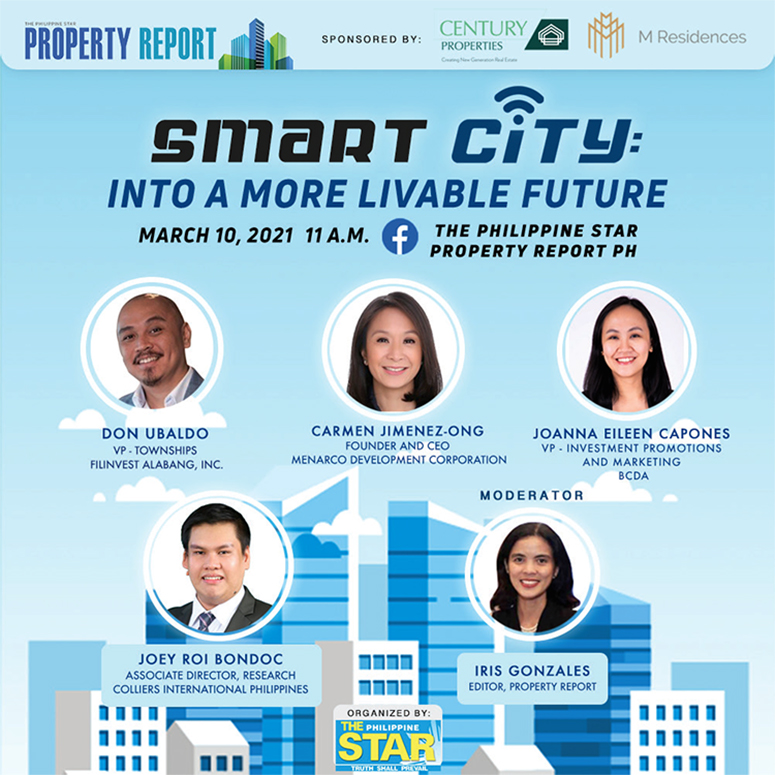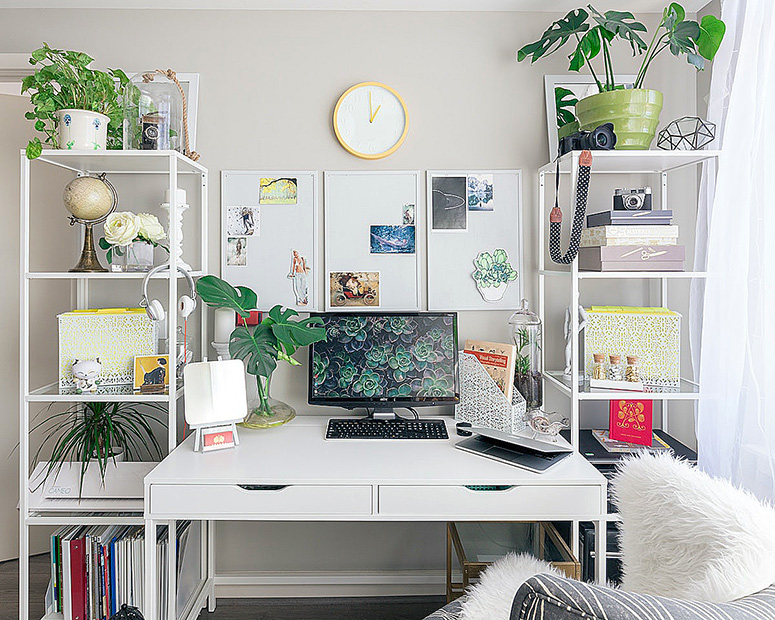It takes more than just installing new technologies to build a smart city; it should be designed to serve the needs, welfare and interests of its residents.
Take the 9,450 hectare New Clark City in Clark, Pampanga, as an illustration of what a smart city should be. Bases Conversion and Development Authority (BCDA) VP for investment promotions and marketing Joanna Eileen Capones said the New Clark City portrays what business districts should look like in the future.
“A smart city is a city that knows the needs of its constituents, and it allows them to meet those needs efficiently. Like people, cities can be smart in different ways, and it really depends on the local context, say, the geographic location, the population and even the level of development,” Capones said in a webinar organized by Property Report PH last March 10, together with Century Properties and Victor Consunji Development Corp.
BCDA’s vision for the New Clark City, she said, is to make it people-centric, business-friendly and environmentally sustainable.
For one, she said the BCDA is now evaluating plans for a medical complex within the area to address the health demands of the residents. Likewise, the BCDA is working with local leaders to put up an e-governance platform that can serve as a one-stop shop for investors who want to do business there.
The government is installing electric grids and smart meters to bring utility services to residential and commercial structures, she added.
Data-driven development
The innovations introduced in New Clark City are what Capones called “data-driven development,” or the use of up-to-date technologies to improve quality of life. In mobility, for one, New Clark City maintains a bus rapid transit that operates on a smart technology for the deployment of the units and their timed arrival.
During the same webinar, Don Ubaldo, Filinvest Alabang Inc. VP for townships said building a smart city takes more than just acquiring the latest systems and putting them in place.
Ubaldo cited Filinvest’s experience in expanding Filinvest City in Alabang, Muntinlupa City. In developing the district located in the south of the metro, he said Filinvest studied a number of factors deemed integral in enhancing quality of life.
Filinvest, for instance, looked at how it can integrate transport and connectivity, how services will be delivered, how buildings can survive the test of time, how energy and water can be saved, and how jobs, education and health care will be reached.
“Tendency for some is to think the technological component is the only characteristic of a smart city. Here, in Filinvest, we think of it as more of a tool, an enabler,” Ubaldo shared.
Filinvest City
As a testament to this, Filinvest City is surrounded by establishments that extend services, both essential and nonessential, to residents: it has a mall in Festival Supermall; healthcare facilities like Asian Hospital Medical Center, Ospital ng Muntinlupa and the Research Institute for Tropical Medicine; and commercial buildings.
“I think even before the term ‘smart city’ became popular, it’s something that we in Filinvest have been consciously building in our development,” Ubaldo said. “Our banner project Filinvest City in Alabang, Muntinlupa City, is our best example of how we have been purposefully developing our townships.”
People first
If developers intend to build a smart city, they should first plan how to improve the lives of people who will reside in it and the operations of firms who will locate in it.
He added smart cities take time to develop and, therefore, developers should make sure theirs are future-proof. In addition, Ubaldo said a smart city like Filinvest City should be able to deliver outcomes whatever the national situation is.
Constructing smart cities
BCDA’s Capones and Filinvest’s Ubaldo believe there’s no reason for the Philippines to lag behind its Asian neighbors in constructing smart cities.
Capones said that while the Philippines has just started developing smart cities, the country is catching up with the rest of the world. With technologies now available in the market, she said the Philippines no longer has to deal with obsolete systems and can just buy the latest additions in the market.

“Now we can choose the technologies that we need, that we want, for our cities, so that can be the latest technologies. That’s what we are doing in BCDA: we are picking the best technology for the needs of our constituents. And I think that’s okay if we are catching up, as long as we are doing it right,” Capones argued.
Ubaldo, for his part, reminded developers to take into consideration the impact on the people of plugging in new technologies. Whether for a smart city or not, Ubaldo said developments should promote the welfare of the people above anything else.
Green buildings
Moreover, locators now not only evaluate the competitive advantages of the city where they will operate, but also the sustainability of the building where they will house, according to Research Colliers International Philippines.
Colliers associate director Joey Roi Bondoc said there are now governments overseas that require developers to align their real estate projects with state policies on sustainability. He warned the developers here to begin to studying these green regulations, as investors abroad may demand compliance to these rules before they set up office here.
“We believe that it’s only a matter of time before tenants occupy and start to be headquartered in these green and sustainable office buildings,” Bondoc said.
He added the Philippines should be ready for any change in requirements asked by occupants, as the country is home to one of the largest business process outsourcing (BPO) industries in Asia next to India. BPO firms, especially from Europe and North America, may mandate their subsidiaries abroad to locate in green buildings, if not smart cities, Bondoc said.

Bondoc also shared Colliers data that 30 percent of office spaces to be completed from 2021 to 2023 adhere to standards set by the Leadership in Energy and Environmental Design (LEED).
Infrastructures seeking to obtain LEED certification must pursue green strategies in building and maintaining the project. Developed by the US Green Building Council, most of the certification’s metrics revolve around power savings, water efficiency and carbon emission reduction.
In the Philippines, Menarco Tower, built by Menarco Development Corp. is the first corporate property in Southeast Asia to earn double certifications being LEED Gold certified and WELL Certified Gold. It is also second in the world, next to Yankee Stadium, to achieve the WELL Health-Safety Rating making it the healthiest and safest building in the region.
Founder and CEO Carmen Jimenez-Ong said in the Property Report PH webinar that smart cities cannot be completed without putting up smart buildings. Ong, echoing Ubaldo’s view on the use of technology, said there is a premium nowadays on innovations that ensure the health and wellness of the people.
“One of the things I really like to share is that a healthy space, smart space and a green space should really focus on the wellness of the people who live, work or play,” Ong said.
For her, the components of a smart building boil down to the following: ventilation, air quality, thermal health, security and safety, water quality, noise, lighting and views. The Menarco Tower fits this category, she added, as it is made up of air conditioners that blast pre-filtered air, double-glazed windows that let in maximum light at minimum heat, and amenities that center on individual well-being, such as food halls, terracing, wellness facilities, and a clinic.
In the end, smart cities are all about using technology and information to make people’s lives better but without harming the planet. Now that isn’t just smart, it’s also the right thing to do.
